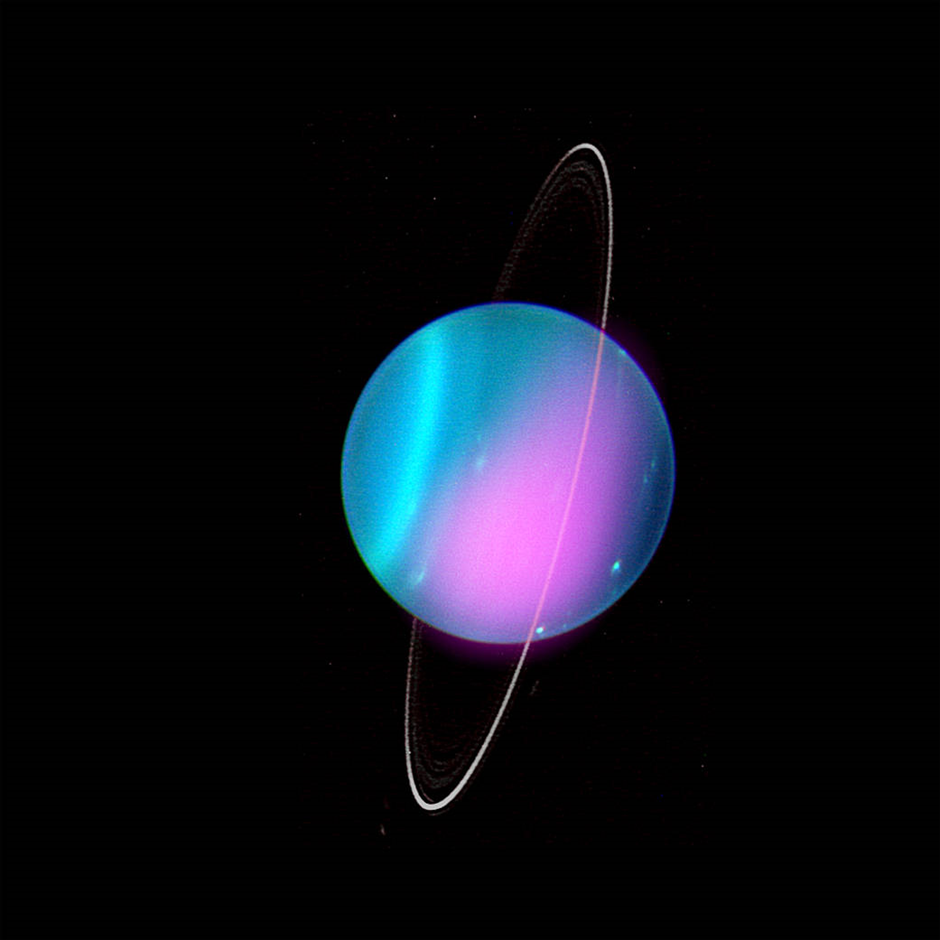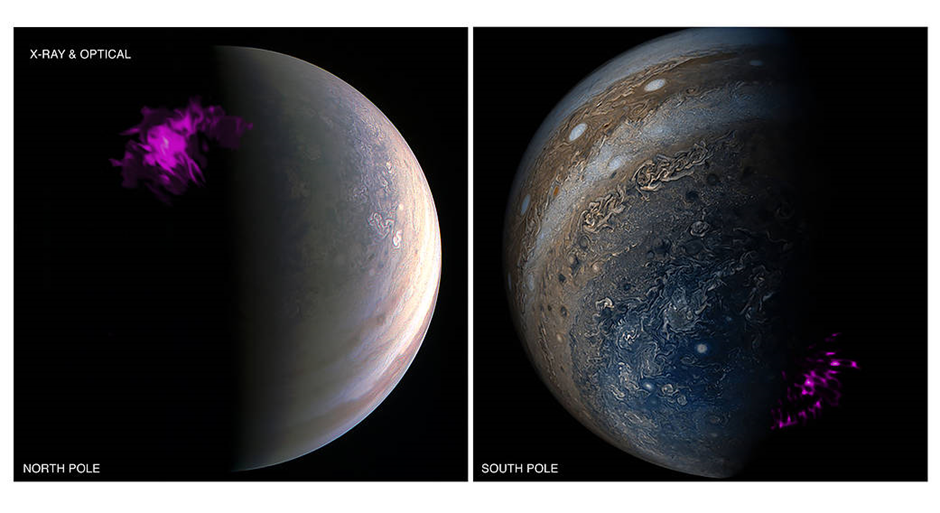Watch: Sept 29 Dr William Dunn: X-raying Uranus and Jupiter | Space Science Bazaar
Speaker: Dr William Dunn
University College London
Sept.29, 2022
4:00 pm GMT+8


The Jovian system is a treasure trove of X-ray sources: diverse and dynamic atmospheric and auroral emissions, diffuse radiation belt and Io torus emissions, and plasma-surface interactions with Jupiter's moons. The system is a rich natural laboratory for astronomical X-rays with each region showcasing its own X-ray production processes: scattering and fluorescence of solar corona emissions; charge exchange emissions from energetic ions; Inverse-Compton, thermal and non-thermal bremsstrahlung emissions from relativistic electrons; and fingerprint fluorescence lines indicative of elemental composition and the potential for life on the Galilean satellites. For the high energy astrophysics domain, perhaps Jupiter's greatest attribute is the opportunity to connect observed X-ray emissions with in-situ plasma and magnetic field measurements of the precise physical processes that lead to them - irreplaceable ground truths for systems that cannot be visited in-situ. Such simultaneous studies have revealed that Jupiter's spectacular soft X-ray flares and pulsations are produced by wave-particle interactions, while the bremsstrahlung aurorae vary with magnetodisk reconnection and dipolarisation. While many remote signatures remain to be linked with their source processes, the future is bright, with synergistic Chandra, NuSTAR, XMM-Newton and Juno in-situ measurements continuing to provide revolutionary insights in the coming years, while JUICE and Europa missions with Athena will enable a new legacy. However, to truly characterise some emissions (e.g. mapping Galilean satellite elemental composition) in-situ X-ray instrumentation is a necessity. Recent advances enable compact, lightweight, X-ray instrumentation perfectly suited for Jupiter science. I will finish the Jupiter section of the talk by reviewing a feasible, low-risk concept that we submitted to the NASA Heliophysics decadal this month, COMPASS, which would paradigm-shift our understanding of the system and provide a stepping-stone from planetary science to astrophysics.
I will close the talk with a brief overview of our discovery that Uranus also produces X-rays and look forward to what this might mean for the Ice Giant systems.
About the speaker

Dr William Dunn currently holds an Ernest Rutherford Fellowship at University College London. Previously, he held an SAO fellowship at the Harvard-Smithsonian Center for Astrophysics in the US, and a European Space Agency NPI fellowship at ESAC (Spain) and at UCL's Mullard Space Science Laboratory (UK), where he undertook his PhD and held a PDRA role. His work focuses on the use of X-ray observatories to study planets and consequently spans the realms of planetary science, heliophysics and astrophysics. In the last year, his findings of note include the discovery of X-ray emissions from Uranus, identifying the processes that lead Jupiter to produce X-ray aurora and the unification of Jupiter’s pulsations, for which he won international awards. Will is also particularly passionate about education equity and improving inclusivity and diversity in science. In this endeavour, he has run the Orbyts research-with-schools programme since 2017. The programme has enabled more than 200 school students to author scientific publications.
Sign up to the ISSI-BJ Newsletter or follow us on WeChat (ISSIBJ)
to be always up-to-date and to not miss our seminars!



